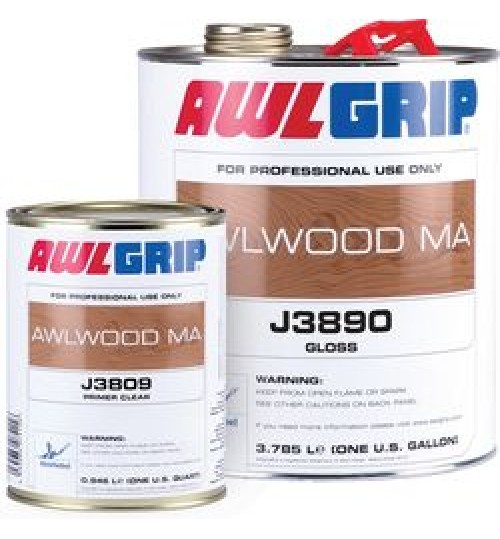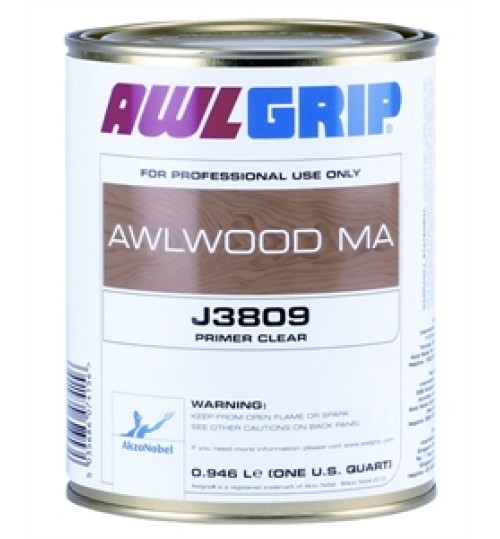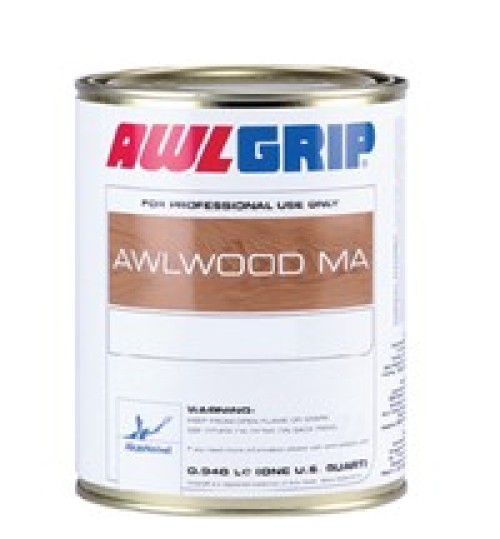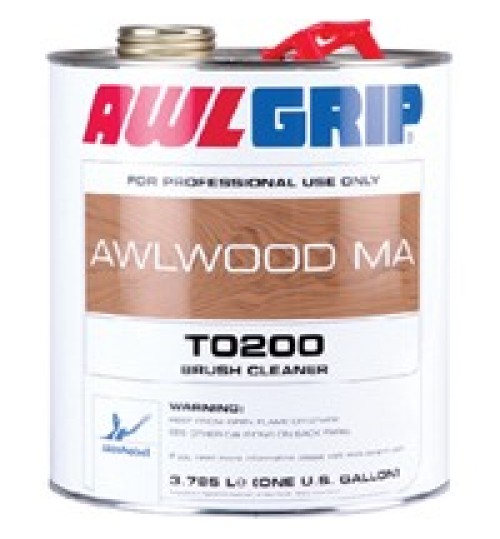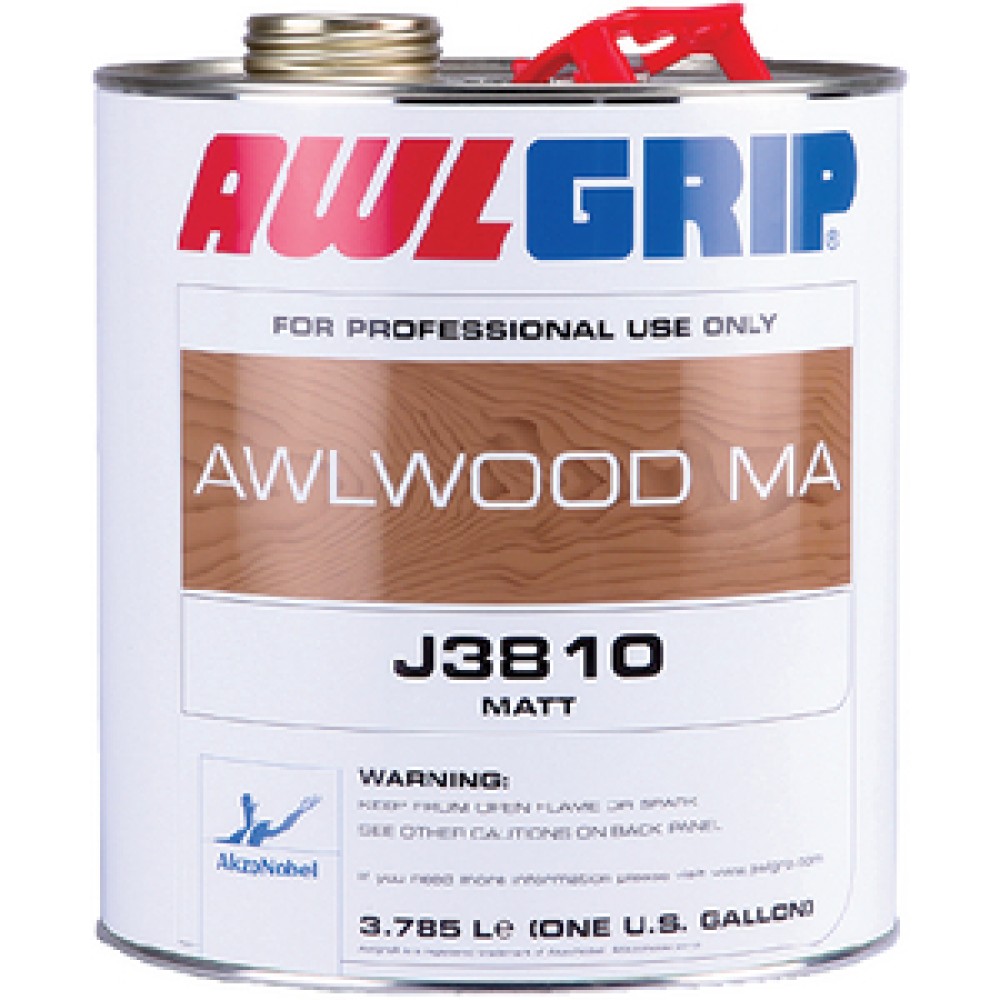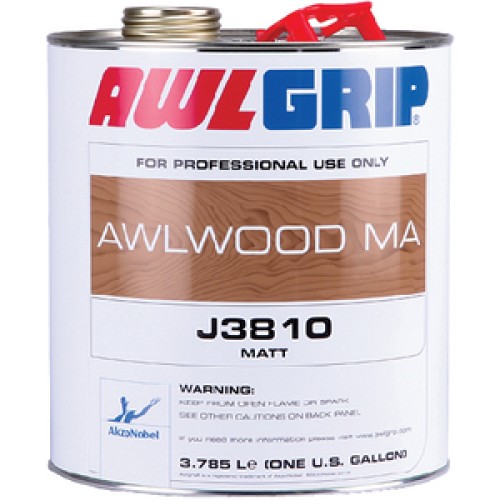
Awlwood MA Satin Matt J3810
Available Options
-
Boat Bottom Paint
- Top Performing Bottom Paint
- Self-Polishing-Ablative Bottom Paint
- Hard Bottom Paint
- Hybrid Bottom Paint
- Water Based Bottom Paint
- Aluminum Safe Bottom Paint
- Bottom Paint Primers
- Specialty Marine Coatings
- Outdrive Paint
- Sea Hawk Paints
- Blue Water Bottom Paints
- Interlux Bottom Paint
- Pettit Bottom Paint
- Bottom Paint Remover
- Aquagard Bottom Paints
- Cleaners-Reducers-Solvents
- Boat Paint
- Boat Zincs
- New Items and Specials
- Boat Bottom Paint3
- Fiberglass and Gel Coat Repair
-
Topside Boat Paint
- Above or Below the Waterline
- Aluminum Boat Paint
-
Awlgrip Marine Paint
- Awlgrip Polyester Urethane Topcoat
- Awlcraft 2000 Acrylic Urethane Topcoat
- Awlgrip Awlcraft® SE Topcoat
- Awlgrip HDT
- Awlcraft 3000
- Awlgrip Converters
- Awlgrip Reducers and Activators
- Awlgrip Primers/Sealers
- Awlgrip Fairing/Surfacing
- Awlgrip Awl-Prep Wipe Down Solvents
- Awlgrip Corrosion Inhibiting Surface Treatments
- Awlgrip Brightwork, Varnish, Interior Wood
- Awlgrip Auxiliary Products
- Awlgrip Maintenance Products
- Camouflage Boat Paint
- Blue Water Topside Paints
- Duralux Marine Paints
- Marine Enamels
- Interlux Topside Paint
- Pettit Easypoxy
- Adhesives and Sealants
- Teak Oil and Wood Restoration
- Boat Paint Supplies
- Resins
- Cleaners and Polish
- Manufacturers
- Propeller and Running Gear Coatings
Your shopping cart is empty!
Product Description
Awlwood MA is an exterior clear system that is made up of a Primer and Clear Finish. By combining the Primer and Clear together, the synergistic effect results in an outstanding performing system that adheres and bonds directly to the wood cellular structure giving extended performance and retaining the same gloss, DOI and natural appearance as first application. *This is for the qt 3890 only/must purchase primer as needed.
For exterior, above waterline use only.
- High building, fast curing formulation allowing multiple applications per day reducing work time
- Applicable over a wide range of temperatures and humidity by various methods so the same great result every time
- Remains highly flexible throughout lifetime of system which allows natural substrate movement whilst giving excellent toughness and abrasion resistance
- Use of the full system gives a synergistic effect resulting in extended performance retaining the same gloss, DOI and natural appearance as first application
- Finish: Satin / Matte

Surface Preparation
The surface preparation advice provided, and equipment suggestions, can be used as a guide. Preparation techniques and results will vary according to individual conditions, equipment age and other factors. Testing on a non-critical area should be carried out prior to full-scale preparation.
Applying over Awlwood MA Red or Yellow Primer
The primer should be sufficiently cured that it sands easily. Hand sand lightly with the timber grain using P400 grit paper or ScotchPad#7447 taking care to avoid sanding through the primer - this will cause uneven colouration. If a greasy timber has been primed or a contaminated substrate is suspected, solvent wipe with Acetone on a rag (wiping off with clean rags) before applying the topcoat. Contaminants from the substrate that float to the surface of the primer can compromise intercoat adhesion.
Applying over Awlwood MA Clear Primer
The primer should be sufficiently cured that it sands easily. Lightly hand or machine sand using P280-320 grit paper taking care to avoid sanding through the primer. If this occurs spot prime the area and sand carefully when primer has cured. Ensure any glossy areas are well sanded. If a greasy timber has been primed or a contaminated substrate is suspected, sand first, then solvent wipe with Acetone on a rag (wiping off with clean rags) before applying the topcoat. Contaminants from the substrate that float to the surface of the primer can compromise intercoat adhesion.
NOTES: If in cold temperatures and/or very dry conditions, the Awlwood MA Clear Primer feels sticky to the touch or cannot be sanded without clogging the paper after an overnight cure, allow more time before proceeding. Ideally aim to apply the first coat of Awlwood MA Clear Gloss within 24 hours of primer application to attain an optimum chemical bond. Sealing timber with the intention of topcoating at a later time: It is best to apply one or two coats of Awlwood MA Gloss over Primers if the job sequence to be broken. Sand well before continuing. The ideal time to apply the first coat of Awlwood MA Gloss over the Primers is 24 hours for chemical adhesion.
Applying over epoxy primer or fibreglass/carbon fibre
Machine or hand sand to remove defects finishing with P180 grit paper. Ensure that no epoxy blush is
present. Test in a small non-visible area to confirm adhesion if unsure.
Mixing & Reduction
Mixing and reduction requirements will vary according to individual conditions, climate, equipment age and other factors. Mixing and application of a small sample before full scale application is recommended.
Application
Application equipment and parameters are given as a guide. Actual equipment choices will vary according to application conditions, equipment age and other factors. Testing on a non-critical area should be carried out prior to full-scale application. Contact local technical service representative for further advice if necessary. Suitable application conditions: 4ºC - 30ºC, Relative humidity 30% - 95%.
NOTE: Awlwood MA Clear Gloss cures by the mechanism of moisture in the air (humidity); very low moisture content in the air will lead to longer cure times. Do not use this product in an air-conditioned environment. If the product is to be applied in an environment where it is suspected that low humidity may inhibit the cure of the product, apply to a test area first. Remove the metal insert under the lid using a spade drill bit taking care to avoid damage to the rim. Decant sufficient product for 30 minutes use into a roller tray or working pot. Wipe the thread and seal the original container immediately to prevent moisture exposure. Screw the cap on fully. A deep working pot is preferable to one that is broad and shallow to minimise moisture exposure and maximise pot life. Do not tip unused product back into the can.
Brushing/Rolling
If applying by brush or foam/mohair roller, aim to apply approximately 490ft2/gal (12m²/L) on horizontal surfaces and 14m²/L on verticals. The product can be applied at a greater rate than a standard varnish. Aim to minimise wet edge times and do not overwork the surface. The product will defoam and level well but tacks up relatively quickly. Rollers are by far the most effective means of covering large flat surfaces: tipping with a brush gives best results if rolling, particularly if the previous coat is "green". If brushing, synthetic bristled brushes with tapered bristles without flagged or split ends are best. The latter tend to shed excessively. Wedge shaped brush tips give best results.
To obtain full grain fill, especially on Hardwoods with a deep grain structure, and to maximise finish, follow the below recommendations
Apply the first two coats of Awlwood MA Gloss at one day intervals, by brush or roller at 12-14m²/L to
ensure full grain penetration and fill. Sand each coat with P220 - P280 grit paper to flatten the grain
texture without sanding through to the primer. This will fill the grain more effectively, reduces solvent
entrapment in the pits of the grain and minimises air bubbles forming in the topcoat before the grain is
fully sealed. If any bubbles do occur from wet product displacing air in the timber grain, gently tipping
these with a dry brush before the product cures is easier than sanding later and will, in many cases,
seal the pinhole. Apply the remaining coats as per the Multicoating section below. For the final coat, refer to the Final Coat Application section below. In hot and/or windy conditions, Awlwood MA Gloss will tack up rapidly. To extend the wet edge and increase workability in these conditions thinning up to 10% with Awlwood MA Brushing Reducer will assist.
Notes: On vertical surfaces, the product will flow and level. Care should be taken to apply less coating on lower edges where flow can lead to a thick bead of product forming. Brushes and rollers require meticulous cleaning before the application of final coats to avoid transfer of debris. Cheap solvent resistant foam brushes can give good results.
If brushes are binding up with curing product during use, they can be quickly freed up by washing with
Acetone, Awlwood MA Brushing Retarder or Awlwood MA Spray Reducer. All surfaces must be completely sealed so that an impervious skin of coating is present.
Recommended to thin up to 10% if using a smaller fluid tip
† Recommended no thinning if using a larger fluid tip
Note: Heavier coats are recommended when spraying as product will flow out and "pull" flat upon curing
Reduce Awlwood MA Clear Gloss up to 10% with Awlwood MA Spray Reducer if necessary or safely warm the can - do not use universal thinners. To obtain full grain fill, especially on Hardwoods with a deep grain structure, and to maximise finish, follow the below recommendations:-
Apply the first two coats of Awlwood MA Gloss at one day intervals, by brush or roller at 12-14m²/L to
ensure full grain penetration and fill. If these initial coats are sprayed they may not flow in and fill the
grain since there are no shear forces to force product into the grain. Spray application of these first
two coats can also result in air bubbles breaking and forming near invisible pinholes, which may show
up as cissing on the next application of finish coat.
Sand each coat with P220 - P280 grit paper to flatten the grain texture without sanding through to the
primer. This will fill the grain more effectively, reduces solvent entrapment in the pits of the grain and
minimises air bubbles forming in the topcoat before the grain is fully sealed. If any bubbles do occur
from wet product displacing air in the timber grain, gently tipping these with a dry brush before the
product cures is easier than sanding later and will, in many cases, seal the pinhole.
Apply the remaining coats as per the Multicoating section below. For the final coat refer to the Final
Coat Application section below. Do not rapidly apply heavy coats to give film build quickly as solvents will remain trapped in the coating inhibiting performance. Allow each coat to become touch dry before applying the subsequent coat.
Note: Do not leave Awlwood MA Gloss in spray pots between coating applications.
Colouring Topcoats
For a richer more traditional appearance, up 10% of the Awlwood MA coloured primers can be added to the Awlwood MA Gloss. This should be done in the first few coats then overcoated with clear topcoat to attain the full coating thickness Film Build Minimum total film build for exterior timber is 10mils (250 microns) which can be attained in 8 coats providing that heavy sanding has not been done. A minimum 0.135 gal (0.5lt) of Awlwood MA Clear Gloss must be applied per square metre over the job. Heavier film build will improve durability. If heavy sanding has been done on the first two coats, allow 0.135 gal (0.5L) per square metres on top of the product used on the first two coats.
Notes: On Hardwoods, the first couple of coats can develop bubbles from air being pushed out of the grain. Once the timber is completely sealed off this will stop. This effect is significantly exacerbated in full sun conditions and when the substrate is warming. Try to apply these first two coats in shaded conditions or early in the day. In full sun, the timber substrate can easily reach 140°F (60°C) which can cause the Awlwood MA Gloss to cure in as little as 10 minutes. If numerous tiny bubbles appear in the surface in these conditions, sand them out and try to apply the coating at either end of the day, in the shade or in overcast conditions.
Between Coats
Sanding is generally not necessary if overcoating on the same day unless extreme drying conditions are
present (full sun or high temperatures) in which case rubbing down with P280 grit paper or Scotchpad #7447 will ensure good intercoat adhesion. For general indoor applications, sanding is needed if more than 24 hours elapse between coats. At the start of each day, sand lightly to remove defects using P220 – 280 grit paper. Take care to not oversand edges. Machine sanders can be used on build coats after an overnight cure. Before the final coat, hand sanding through to P600 grit paper working with the grain will give best results. Horizontal applications will require far less sanding than vertical. After sanding, remove sanding dust by vacuuming then warm water wash only using lint free cloths until surface is completely clean. Tack cloths are not recommended. If contamination is suspected solvent wash the surface using only Awlwood MA Brush Reducer or Awlwood MA Spray Reducer before and after sanding well.
Multicoating
Multiple coats may be applied in one day provided the previous coat is sufficiently cured. As a general
indicator, when one coat can be pressed with a finger without leaving an indented fingerprint, another coat can be applied without sanding being required. If the brush or roller binds with, or re-dissolves the previous coat, more drying time is needed. Alternatively if the cured film can be gently sanded with P220 grit paper without binding it can be overcoated. Applying multiple coats in a single day will reduce flow and levelling necessitating more sanding the following day however, multicoating is a useful means of attaining rapid film build. If multicoating, lightly scuffing between coats with ScotchPad#7447 will dull the surface making it easier for the applicator to avoid misses. Good practice is to gently sand/scuff the surface at the start of each day to remove any texture, especially on vertical surfaces, and then multi-coat as above.
Final Coat Application
The final coat should be applied in a single application after fine sanding: any remaining texture will be visible in the finish coat. If brushing or rolling, better flow levelling will be attained on a well cured substrate. For best results, the final coat should be applied in optimal conditions: out of direct sunlight and in minimal wind. Early in the day is best. Reduce the final coat of Awlwood MA 10% by volume. Apply the final coat removing any heavy sags or runs but do not overwork the product. Once a non-running film is achieved, allow Awlwood MA to cure and flow on its own – DO NOT CONTINUE TO BRUSH to remove brush marks etc. Awlwood MA is designed to flow and level without the need for over-working the product. If spraying, meticulous care must be taken to ensure a dust and contaminant free environment. If not being applied in a booth, best practice is tenting the area being coated and forcing filtered air in. As a minimum, the area should be completely closed up, vacuumed and thoroughly washed, then washed again the day of application. Reduce the final coat of Awlwood MA 10% by volume. Apply a mist coat then follow up with a coat applied with a cross spray pattern or alternatively, cross spray a single coat without the initial mist coat. When removing masking tape, score the film along the masking line with a blade taking care to avoid cutting right through the film. Remove tape by folding it over 180 degrees to minimise stress on the film.
Recoating
Sand very well using P220 grit paper and apply at least an additional 2 coats. Add coloured primer up to 10% to counter any timber fading if necessary. Touch up any areas of damage first by sanding, re-priming and building up the full coating thickness.
Recoatability and Drying Time
The data given for recoatability is not exhaustive. Actual recoatability can vary according to individual
conditions, climate and surroundings. If unsure consult local technical service representative before
proceeding.
Sanding:
Awlwood MA Clear Gloss is sandable after 8 hours at 60°F (15°C), 4 hours at 77°F (25°C) and 3 hours at
86°F (30°C). Sand using P220-280 grit sandpaper for build coats and up to P600 for the final coat.
Warning Notes: Not suitable for use in temperatures less than 4ºC or greater than 30ºC. Not suitable for use in very low humidity atmospheres.
Do not apply when condensation may form on uncured coating.
Do not add any universal or alcohol-based thinners or reducers to Awlwood MA Clear Gloss.
Some sunscreens contain ‘nano grades' of Titanium Dioxide or Zinc Oxide which when transferred from
hands onto varnished exterior surfaces will accelerate UV degradation of the surface significantly.
Ensure that brushes washed with Awlwood MA Brush Cleaner are well rinsed with Acetone, Awlwood MA
Brushing Reducer or Awlwood MA Spray Reducer before using with Awlwood MA Gloss.
Check with local authorities to determine VOC restrictions in your area.
Please ensure a risk assessment is carried out to assess the level of PPE required for the particular task
undertaken when using this product.

